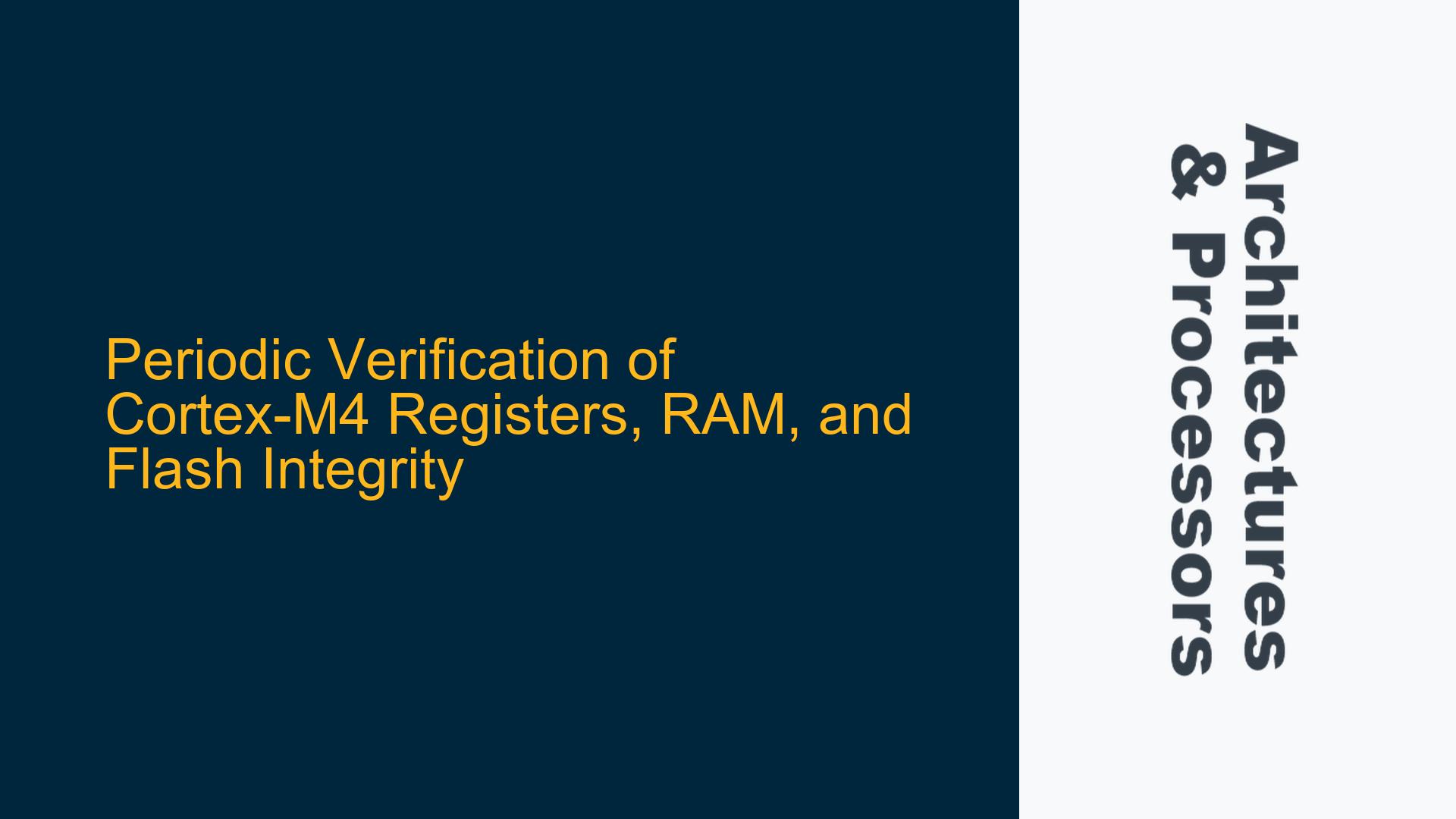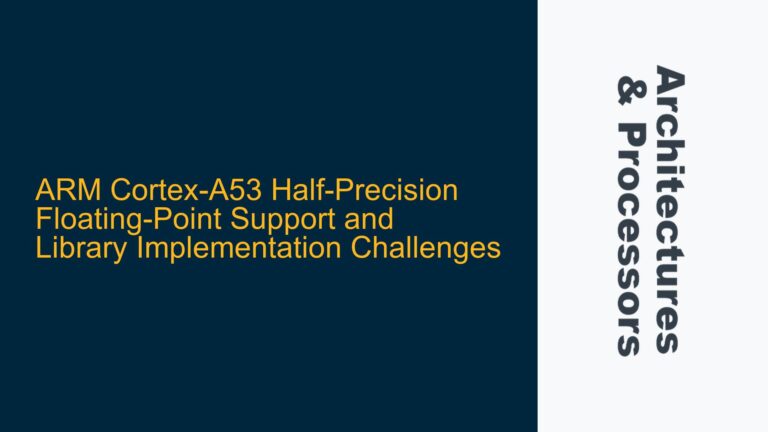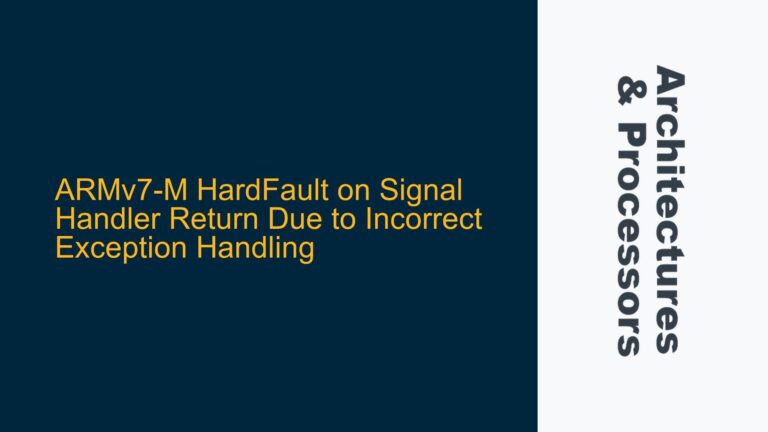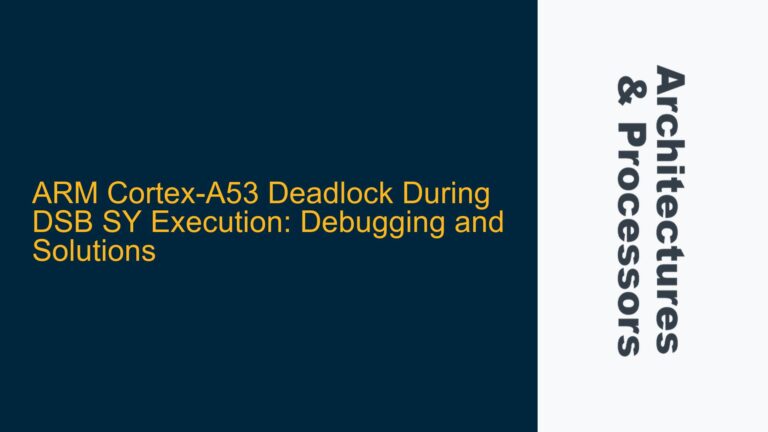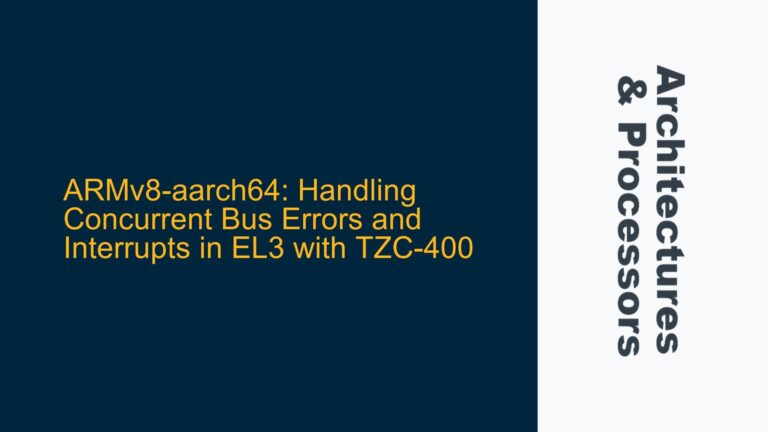Cortex-M4 Register, RAM, and Flash Integrity Verification Challenges
The Cortex-M4 microcontroller, like many embedded systems, operates in environments where reliability is paramount. Ensuring the integrity of registers, RAM, and Flash memory during runtime is critical for applications in automotive, industrial control, and medical devices. However, implementing periodic checks on these components introduces several challenges. Registers are volatile and change frequently during program execution, making it difficult to establish a baseline for comparison. RAM integrity can be compromised by soft errors caused by electromagnetic interference or radiation, leading to bit flips. Flash memory, while non-volatile, can suffer from data corruption due to write/erase cycle wear or external factors like voltage fluctuations.
The primary issue lies in designing a software-based mechanism to periodically verify the integrity of these components without significantly impacting the real-time performance of the system. For registers, the challenge is to distinguish between expected changes due to program execution and unexpected alterations caused by hardware faults. For RAM, the problem is detecting and correcting errors without introducing excessive latency. For Flash memory, the difficulty is in efficiently computing and comparing checksums or CRCs while minimizing wear on the memory cells.
Memory Corruption Mechanisms and Detection Strategies
Memory corruption in Cortex-M4 systems can arise from various sources, each requiring a tailored detection strategy. For registers, corruption can occur due to electrical noise, faulty power supplies, or even software bugs that inadvertently overwrite critical values. Detecting such issues requires a combination of runtime monitoring and redundancy. For example, critical registers can be shadowed in RAM, and their values can be compared periodically to ensure consistency.
RAM corruption is often caused by soft errors, which are transient faults induced by external factors like cosmic rays or electromagnetic interference. These errors can flip bits in memory, leading to incorrect data or program crashes. Detecting RAM corruption typically involves using error detection and correction codes (ECC) or periodic scrubbing, where the memory is read, checked for errors, and corrected if necessary. However, implementing ECC in software can be computationally expensive, and scrubbing can introduce latency.
Flash memory corruption can result from write/erase cycle wear, read disturb, or data retention issues. Over time, the oxide layer in Flash memory cells degrades, leading to bit errors. Read disturb occurs when frequent reads to a cell cause neighboring cells to change state. Data retention issues arise when stored charge leaks away over time, especially at high temperatures. Detecting Flash corruption involves computing checksums or CRCs of the stored data and comparing them to precomputed values. However, this process must be carefully managed to avoid excessive wear on the Flash memory.
Implementing Register, RAM, and Flash Integrity Checks
To implement periodic integrity checks for Cortex-M4 registers, RAM, and Flash memory, a multi-faceted approach is required. For registers, the first step is to identify critical registers that must be monitored. These could include control registers, status registers, and any registers that store configuration data. Once identified, these registers can be shadowed in RAM, and their values can be compared periodically. Any discrepancies between the shadow copy and the actual register value can trigger an error handler, which can take corrective action such as resetting the register or restarting the system.
For RAM integrity, a combination of ECC and periodic scrubbing can be used. ECC can be implemented in software by storing additional parity bits alongside the data. When the data is read, the parity bits are checked, and any errors are corrected. Periodic scrubbing involves reading each memory location, checking for errors, and writing back corrected data if necessary. This process can be performed during idle periods to minimize the impact on system performance.
Flash memory integrity can be verified using checksums or CRCs. When the firmware is loaded into Flash, a checksum or CRC is computed and stored in a known location. During runtime, the checksum or CRC of the Flash memory is recomputed and compared to the stored value. Any mismatch indicates data corruption. To minimize wear on the Flash memory, the checksum or CRC computation can be performed in blocks, and the results can be stored in RAM for comparison.
In addition to these techniques, it is important to implement error logging and reporting mechanisms. When an error is detected, it should be logged along with relevant context information such as the time of occurrence, the affected memory location, and the type of error. This information can be used for diagnostics and to improve the robustness of the system over time.
Detailed Implementation of Register Integrity Checks
Implementing register integrity checks on a Cortex-M4 microcontroller involves several steps. First, identify the critical registers that need to be monitored. These could include the program counter (PC), stack pointer (SP), and any control registers that are essential for the operation of the system. Once identified, create shadow copies of these registers in RAM. The shadow copies should be updated whenever the actual registers are modified.
To perform the integrity check, create a periodic task that compares the shadow copies to the actual registers. This task can be triggered by a timer interrupt or integrated into the main program loop. If a discrepancy is detected, the system should log the error and take corrective action. This could involve resetting the affected register,
